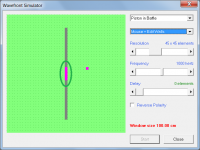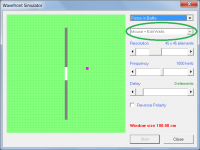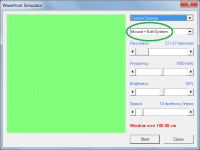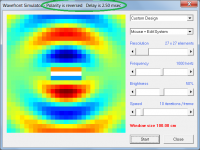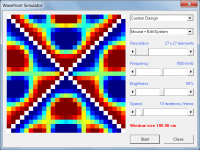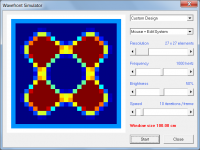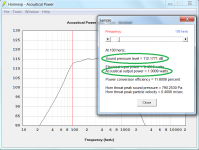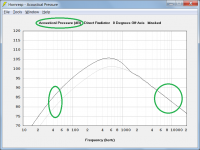winDOS is a virtual machine itself not a real operating system. So as tb46 suggested, why not run winDOS XP (or 7) as a virtual machine inside the winDOS 10 virtual machine? A good, free, open source virtualization alternative is Virtual Box. If you choose to do this be sure to install the Extension Pack for VBox after installing your VM from HERE.
With Virtual Box it is easy to setup machines and easy to use once setup, and its free software. You can configure the virtual hard disk to be dynamic, thereby saving your physical disk space until needed. Having a few winDOS VM appliances set up is a great way to maintain pristine special purpose platforms. And it provides an opportunity to install and learn a real operating system at your leisure if interested in that.
http://www.oracle.com/technetwork/server-storage/virtualbox/downloads/index.html
With Virtual Box it is easy to setup machines and easy to use once setup, and its free software. You can configure the virtual hard disk to be dynamic, thereby saving your physical disk space until needed. Having a few winDOS VM appliances set up is a great way to maintain pristine special purpose platforms. And it provides an opportunity to install and learn a real operating system at your leisure if interested in that.
http://www.oracle.com/technetwork/server-storage/virtualbox/downloads/index.html
winDOS is a virtual machine itself not a real operating system. So as tb46 suggested, why not run winDOS XP (or 7) as a virtual machine inside the winDOS 10 virtual machine? A good, free, open source virtualization alternative is Virtual Box. If you choose to do this be sure to install the Extension Pack for VBox after installing your VM from HERE.
With Virtual Box it is easy to setup machines and easy to use once setup, and its free software. You can configure the virtual hard disk to be dynamic, thereby saving your physical disk space until needed. Having a few winDOS VM appliances set up is a great way to maintain pristine special purpose platforms. And it provides an opportunity to install and learn a real operating system at your leisure if interested in that.
http://www.oracle.com/technetwork/server-storage/virtualbox/downloads/index.html
I tried VirtualBox once, then took it off because it was screwing around with the PC's network config in a way I didn't like.
At the moment I use Hyper-V, which is free with the Professional version of Win10. Works fine for the task. I think at peak I had about 6 VMs running ranging from WinXP to Win10(VM) and a few favours of Linux, but I'm back down to just a WinXP VM and my Win8.1 VM for the office, as I couldn't see anything in the Linux VMs that I couldn't do in Win10.
Oh, and HornResp on my Win10 PC works fine
winDOS is a virtual machine itself not a real operating system. So as tb46 suggested, why not run winDOS XP (or 7) as a virtual machine inside the winDOS 10 virtual machine? A good, free, open source virtualization alternative is Virtual Box. If you choose to do this be sure to install the Extension Pack for VBox after installing your VM from HERE.
With Virtual Box it is easy to setup machines and easy to use once setup, and its free software. You can configure the virtual hard disk to be dynamic, thereby saving your physical disk space until needed. Having a few winDOS VM appliances set up is a great way to maintain pristine special purpose platforms. And it provides an opportunity to install and learn a real operating system at your leisure if interested in that.
http://www.oracle.com/technetwork/server-storage/virtualbox/downloads/index.html
Creating Virtiul Machines for free is possible with a lot of tools, vmare works, too..
I managed to put hornresp to work in an even "all free" environment, time has passed since then, so even more should be possible today.
Reactos free windows "clone" running hornresp..
http://www.diyaudio.com/forums/subwoofers/119854-hornresp-389.html#post3737972
Hornresp Update 3970-160621
Hi Everyone,
The Wavefront Simulator tool has been further refined.
1. When the 'Piston in Baffle' option was selected and the mouse then Alt + clicked once to add a new (pink) source point, if the 'Clear Waves' option was then selected the original baffle piston source would turn pink - see Attachment 1.
This has now been fixed. When a source is only partly-specified the drop-down list containing the 'Clear Waves' option is now disabled, preventing the offending option from being selected - see Attachment 2.
2. The 'Mouse = Edit Wave' option has been removed because it served no real practical purpose, and the 'Mouse = Edit Walls' option has been changed to read 'Mouse = Edit System' - see Attachment 3.
3. Moving the mouse pointer over a source now displays the selected polarity and/or delay settings in the caption bar at the top of the tool - see Attachment 4.
As an added bonus, the Wavefront Simulator tool can generate nice patchwork patterns . See examples Attachments 5 and 6.
. See examples Attachments 5 and 6.
Kind regards,
David
Hi Everyone,
The Wavefront Simulator tool has been further refined.
1. When the 'Piston in Baffle' option was selected and the mouse then Alt + clicked once to add a new (pink) source point, if the 'Clear Waves' option was then selected the original baffle piston source would turn pink - see Attachment 1.
This has now been fixed. When a source is only partly-specified the drop-down list containing the 'Clear Waves' option is now disabled, preventing the offending option from being selected - see Attachment 2.
2. The 'Mouse = Edit Wave' option has been removed because it served no real practical purpose, and the 'Mouse = Edit Walls' option has been changed to read 'Mouse = Edit System' - see Attachment 3.
3. Moving the mouse pointer over a source now displays the selected polarity and/or delay settings in the caption bar at the top of the tool - see Attachment 4.
As an added bonus, the Wavefront Simulator tool can generate nice patchwork patterns
Kind regards,
David
Attachments
level versus power versus radiation angle
Hello,
Hornresp means to show acoustical power, while it does not. It shows SPL neither. It provides true absolute numbers only for direct radiators, while for horns it is off.
Let me first state important facts. Sound intensity is the power measure W/m^2 which translates into the amplitude measure SPL. An intensity of one Watt of sound going thru one square meter equals a sound pressure level of 12 Bel at any point of that area. For a driver in an infinite baffle, say half-sphere radiation, this 1 Watt of sound results in 112 Decibels at a distance of 1 Meter, because a half-sphere of 1 Meter radius has a surface area of 2Pi square meter. Our ears and most microphones detect not power but pressure, so we rather use SPL than sound intensity. If sound intensity say power is risen four-fold, "+6dB", then pressure say amplitude is doubled.
Now if in Hornresp i type in the Thiele-Small Parameters of a certain small driver (small enuf, that the microphone at a distance of 1 Meter is not in the DriverSize/Pi nearfield, where pressure and velocity are out of phase, and small enuf, that the driver does not beam) and use it in a sealed baffle (a horn as short as possible) in half-space radiation, then "acoustical power" prints SPL value at a distance of 1 Meter.
When i change radiation to quarter-sphere, then Hornresp tells me, that acoustical power would rise by 6 dB. This is wrong, because acoustic impedance and so efficiency have only doubled, say risen by 3 dB. SPL does rises by 6 dB, because +3 dB power go into a space, which has been halved, what accounts for another gain of 3 dB, and 3 dB + 3 dB = 6 dB.
But Hornresp does not just call SPL acoustical power, it does worse.
If i type in a big and strong exponential horn, which has a beamwidth of 50 degrees at 1 KHz, and also type in half-space radiation, then Hornresp plots me certain values of acoustical power. If i now change radiation to full space, then Hornresp does two things: At low frequencies, it reduces "acoustical power" output by 6dB. This is the behaviour discussed above.
But at 1 KHz, it reduces "acoustical power" output by 3dB. This is not like reality, where acoustical power is not reduced at all: At this frequency, the horn beams that much that does not "see" the halving of space, hence no change in acoustical impedance, no change in sound intensity, no change in SPL.
It would be fine, if this were fixed, because else Hornresp is a useful tool.
Uli
Hello,
Hornresp means to show acoustical power, while it does not. It shows SPL neither. It provides true absolute numbers only for direct radiators, while for horns it is off.
Let me first state important facts. Sound intensity is the power measure W/m^2 which translates into the amplitude measure SPL. An intensity of one Watt of sound going thru one square meter equals a sound pressure level of 12 Bel at any point of that area. For a driver in an infinite baffle, say half-sphere radiation, this 1 Watt of sound results in 112 Decibels at a distance of 1 Meter, because a half-sphere of 1 Meter radius has a surface area of 2Pi square meter. Our ears and most microphones detect not power but pressure, so we rather use SPL than sound intensity. If sound intensity say power is risen four-fold, "+6dB", then pressure say amplitude is doubled.
Now if in Hornresp i type in the Thiele-Small Parameters of a certain small driver (small enuf, that the microphone at a distance of 1 Meter is not in the DriverSize/Pi nearfield, where pressure and velocity are out of phase, and small enuf, that the driver does not beam) and use it in a sealed baffle (a horn as short as possible) in half-space radiation, then "acoustical power" prints SPL value at a distance of 1 Meter.
When i change radiation to quarter-sphere, then Hornresp tells me, that acoustical power would rise by 6 dB. This is wrong, because acoustic impedance and so efficiency have only doubled, say risen by 3 dB. SPL does rises by 6 dB, because +3 dB power go into a space, which has been halved, what accounts for another gain of 3 dB, and 3 dB + 3 dB = 6 dB.
But Hornresp does not just call SPL acoustical power, it does worse.
If i type in a big and strong exponential horn, which has a beamwidth of 50 degrees at 1 KHz, and also type in half-space radiation, then Hornresp plots me certain values of acoustical power. If i now change radiation to full space, then Hornresp does two things: At low frequencies, it reduces "acoustical power" output by 6dB. This is the behaviour discussed above.
But at 1 KHz, it reduces "acoustical power" output by 3dB. This is not like reality, where acoustical power is not reduced at all: At this frequency, the horn beams that much that does not "see" the halving of space, hence no change in acoustical impedance, no change in sound intensity, no change in SPL.
It would be fine, if this were fixed, because else Hornresp is a useful tool.
Uli
Last edited:
Hi Uli,
The Hornresp "Acoustical Power" response chart shows the constant directivity sound pressure produced at a point source normalised distance of one metre when the driver is supplied with a signal of a given voltage, versus frequency in hertz. The level is expressed in decibels relative to the standard reference sound pressure of 20 micropascals. The acoustical power output producing the constant directivity sound pressure is assumed to radiate uniformly into the solid angle specified by the Ang input parameter.
The Directivity Response tool can be used to take into account the frequency dependent directional characteristics of direct radiating single drivers and finite single-segment horns.
The above information is included in the Hornresp Help file under the "Acoustical Power" heading in the "Default Result Windows" section.
Hornresp assumes that the velocity of sound in air is 344 metres per second, and that the density of air is 1.205 kilograms per cubic metre, which means that 1 watt of acoustical power radiating into half-space produces a sound pressure level of 112.17 dB at a distance of 1 metre.
The relevant equations (for half-space radiation) are:
I = W / (2 * Pi * r ^ 2)
p = Sqrt(I * rho * c)
SPL = 20 Log10(p / pref)
Where:
I = sound intensity in watts / m^2
W = sound power = 1 watt
r = radius of hemisphere into which the sound power radiates = 1 metre
p = sound pressure in newtons / m^2 or pascals
rho = air density = 1.205 kilograms per cubic metre
c = sound velocity = 344 metres per second
pref = reference sound pressure = 2 * 10 ^ -5 pascals
If a copy of the Hornresp default record is taken and Ang changed to 2 x Pi and Eg changed to 7.69 volts, making the "resonances masked" acoustical power output at 100 hertz near enough to one watt, then the SPL is 112.17 dB, as expected - see attachment.
See the Hornresp Acoustical Power response chart explanation above.
See the reference to the Directivity Response tool in the Hornresp Acoustical Power response chart explanation above.
Sorry, it is not going to happen .
.
The chart was originally titled "Constant Directivity", but the name was changed to "Acoustical Power" some time ago because that is the generally-accepted term used to describe such charts (Hornresp "Acoustical Power" and AkAbak "Acoustic Power" chart results are identical, for instance).
Kind regards,
David
Hornresp means to show acoustical power, while it does not. It shows SPL neither. It provides true absolute numbers only for direct radiators, while for horns it is off.
The Hornresp "Acoustical Power" response chart shows the constant directivity sound pressure produced at a point source normalised distance of one metre when the driver is supplied with a signal of a given voltage, versus frequency in hertz. The level is expressed in decibels relative to the standard reference sound pressure of 20 micropascals. The acoustical power output producing the constant directivity sound pressure is assumed to radiate uniformly into the solid angle specified by the Ang input parameter.
The Directivity Response tool can be used to take into account the frequency dependent directional characteristics of direct radiating single drivers and finite single-segment horns.
The above information is included in the Hornresp Help file under the "Acoustical Power" heading in the "Default Result Windows" section.
For a driver in an infinite baffle, say half-sphere radiation, this 1 Watt of sound results in 112 Decibels at a distance of 1 Meter, because a half-sphere of 1 Meter radius has a surface area of 2Pi square meter.
Hornresp assumes that the velocity of sound in air is 344 metres per second, and that the density of air is 1.205 kilograms per cubic metre, which means that 1 watt of acoustical power radiating into half-space produces a sound pressure level of 112.17 dB at a distance of 1 metre.
The relevant equations (for half-space radiation) are:
I = W / (2 * Pi * r ^ 2)
p = Sqrt(I * rho * c)
SPL = 20 Log10(p / pref)
Where:
I = sound intensity in watts / m^2
W = sound power = 1 watt
r = radius of hemisphere into which the sound power radiates = 1 metre
p = sound pressure in newtons / m^2 or pascals
rho = air density = 1.205 kilograms per cubic metre
c = sound velocity = 344 metres per second
pref = reference sound pressure = 2 * 10 ^ -5 pascals
If a copy of the Hornresp default record is taken and Ang changed to 2 x Pi and Eg changed to 7.69 volts, making the "resonances masked" acoustical power output at 100 hertz near enough to one watt, then the SPL is 112.17 dB, as expected - see attachment.
When i change radiation to quarter-sphere, then Hornresp tells me, that acoustical power would rise by 6 dB. This is wrong,
See the Hornresp Acoustical Power response chart explanation above.
But at 1 KHz, it reduces "acoustical power" output by 3dB. This is not like reality, where acoustical power is not reduced at all: At this frequency, the horn beams that much that does not "see" the halving of space, hence no change in acoustical impedance, no change in sound intensity, no change in SPL.
See the reference to the Directivity Response tool in the Hornresp Acoustical Power response chart explanation above.
It would be fine, if this were fixed,
Sorry, it is not going to happen
The chart was originally titled "Constant Directivity", but the name was changed to "Acoustical Power" some time ago because that is the generally-accepted term used to describe such charts (Hornresp "Acoustical Power" and AkAbak "Acoustic Power" chart results are identical, for instance).
Kind regards,
David
Attachments
Hornresp Update 3970-160623
Hi Everyone,
I noticed another small thing with the Wavefront Simulator tool that I was not entirely comfortable with. Even though the anomaly would probably never have been observed by the average user, it has nevertheless been rectified. Hopefully the Wavefront Simulator tool now works "perfectly" under all conditions .
.
Kind regards,
David
Hi Everyone,
I noticed another small thing with the Wavefront Simulator tool that I was not entirely comfortable with. Even though the anomaly would probably never have been observed by the average user, it has nevertheless been rectified. Hopefully the Wavefront Simulator tool now works "perfectly" under all conditions
Kind regards,
David
About "acoustical power", David:
I find that term misleading, since it does not show acoustical power but rather SPL, but really SPL neither. I wanna find out sound pressure level at a given distance for a beaming horn.
I answer that question myself. For a beamwidth of Pi/3 and a radius of 1m, sphere cutout surface is well one quarter of 2Pi. {German sphere math, 2a=1, h=1-cos(Pi/6)}. For acoustical impedance has not but only radiated-thru surface has changed, SPL is nearly + 6dB of "acoustical power". Generally, SPL at a distance of 1 meter is "acoustical power" times 2Pi divided by square of beam sphere cutout surface, if a beamwidth of 1 equals full-, half-, quarter- or eighth-space as put in the program.
I find that term misleading, since it does not show acoustical power but rather SPL, but really SPL neither. I wanna find out sound pressure level at a given distance for a beaming horn.
I answer that question myself. For a beamwidth of Pi/3 and a radius of 1m, sphere cutout surface is well one quarter of 2Pi. {German sphere math, 2a=1, h=1-cos(Pi/6)}. For acoustical impedance has not but only radiated-thru surface has changed, SPL is nearly + 6dB of "acoustical power". Generally, SPL at a distance of 1 meter is "acoustical power" times 2Pi divided by square of beam sphere cutout surface, if a beamwidth of 1 equals full-, half-, quarter- or eighth-space as put in the program.
Last edited:
Hi Uli,
In that case, use the Hornresp Directivity Response tool, which calculates the pressure response rather than the power response.
In practice the "beamwidth" will vary considerably with frequency, unless a constant-directivity horn design is used, and is operated over a limited frequency range.
Kind regards,
David
I wanna find out sound pressure level at a given distance for a beaming horn.
In that case, use the Hornresp Directivity Response tool, which calculates the pressure response rather than the power response.
I answer that question myself. For a beamwidth of Pi/3 and a radius of 1m, sphere cutout surface is well one quarter of 2Pi.
In practice the "beamwidth" will vary considerably with frequency, unless a constant-directivity horn design is used, and is operated over a limited frequency range.
Kind regards,
David
I see, this is it. That German sphere math is still wrong. Thank you!In that case, use the Hornresp Directivity Response tool, which calculates the pressure response rather than the power response.
But at 1 KHz, it reduces "acoustical power" output by 3dB. This is not like reality, where acoustical power is not reduced at all: At this frequency, the horn beams that much that does not "see" the halving of space, hence no change in acoustical impedance, no change in sound intensity, no change in SPL.
The attached screenprint compares the on-axis pressure response of a simple direct radiator loudspeaker radiating into 2 x Pi half-space (grey trace) to the on-axis pressure response of the same loudspeaker radiating into 1 x Pi quarter-space (black trace). At low frequencies the difference is 6 dB as expected, while at high frequencies there is no difference because of "beaming", also as expected.
Attachments
I see, this is it. That German sphere math is still wrong. Thank you!
Not a problem, glad to be able to help out
Acoustical power is a well-defined term, so it should be used only in that well-defined way. For a start, it is stated in Watts, not in Pascals. Acoustical intensity in W/m^2 can become translated into SPL in Pa without special presumptions (just speed of sound in air and density of air, which are constant at sea level), but power cannot become translated into SPL without special presumptions, as this translation also depends on distance and radiation pattern. If Akabak calls SPL "acoustical power", too, it is wrong, too.
Acoustical power is a well-defined term, so it should be used only in that well-defined way. For a start, it is stated in Watts, not in Pascals. Acoustical intensity in W/m^2 can become translated into SPL in Pa without special presumptions (just speed of sound in air and density of air, which are constant at sea level), but power cannot become translated into SPL without special presumptions, as this translation also depends on distance and radiation pattern. If Akabak calls SPL "acoustical power", too, it is wrong, too.
I can add some information that may be useful.
I have used this program for almost 14 years. I have built a great many enclosures with it. Modeled them and measured them. The results are available on this forum.
What I have found is that it really does have a solid modeling method.
I have learned to use Hornresp in ways that David McBean never intended. And there are others who have pushed the program in directions that are very enlightening.
Every time when the simulation has been compared to the measurements there is a very god correlation.
Learn the program and appreciate it for how well it works.
Build your designs. Test and measure them.
Picking at minute details is not going to help you or anyone else design loudspeakers.
The current naming conventions within the program work well enough that many thousands of people use this program.
Perhaps you to will grow to appreciate it.
- Home
- Loudspeakers
- Subwoofers
- Hornresp
